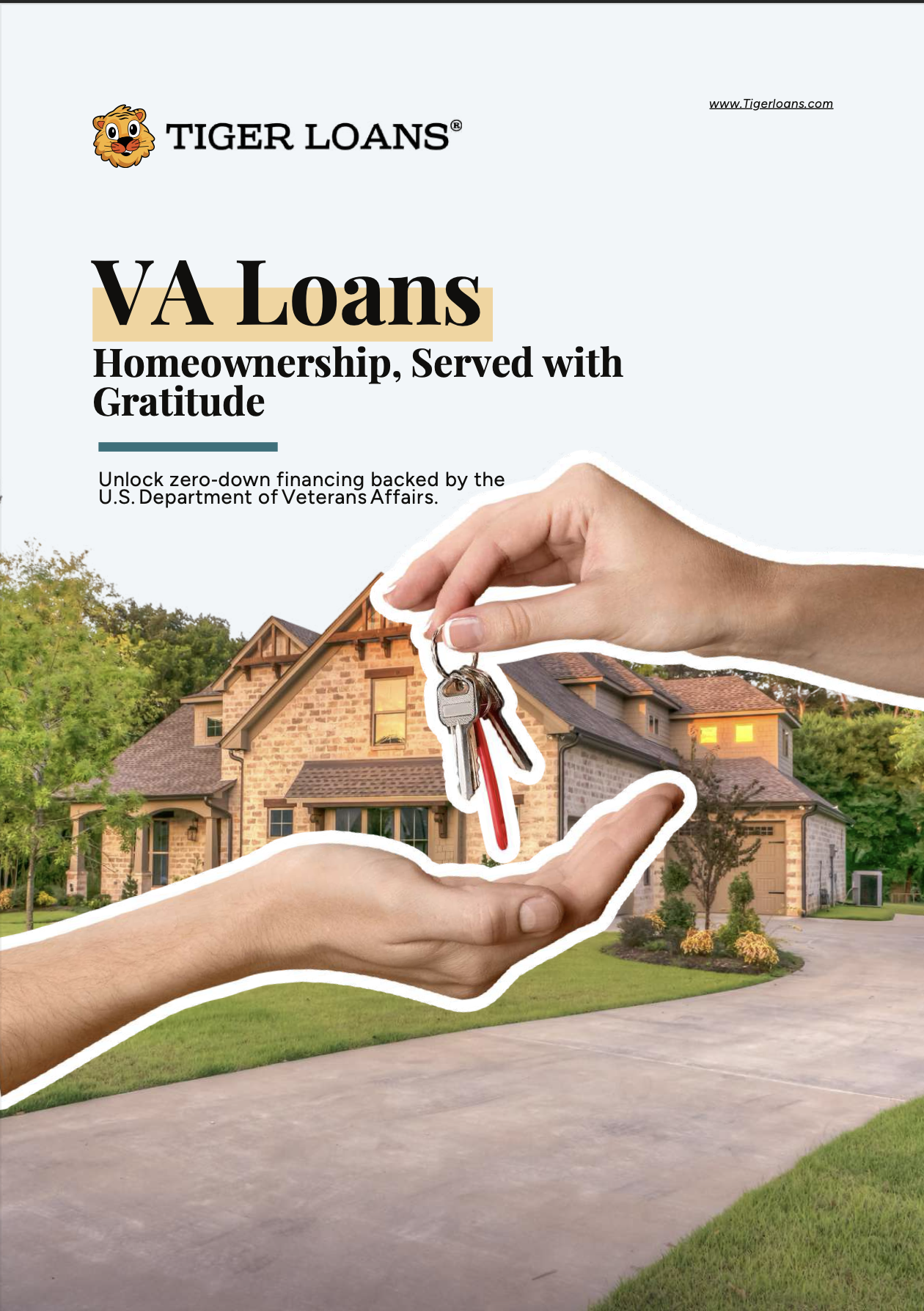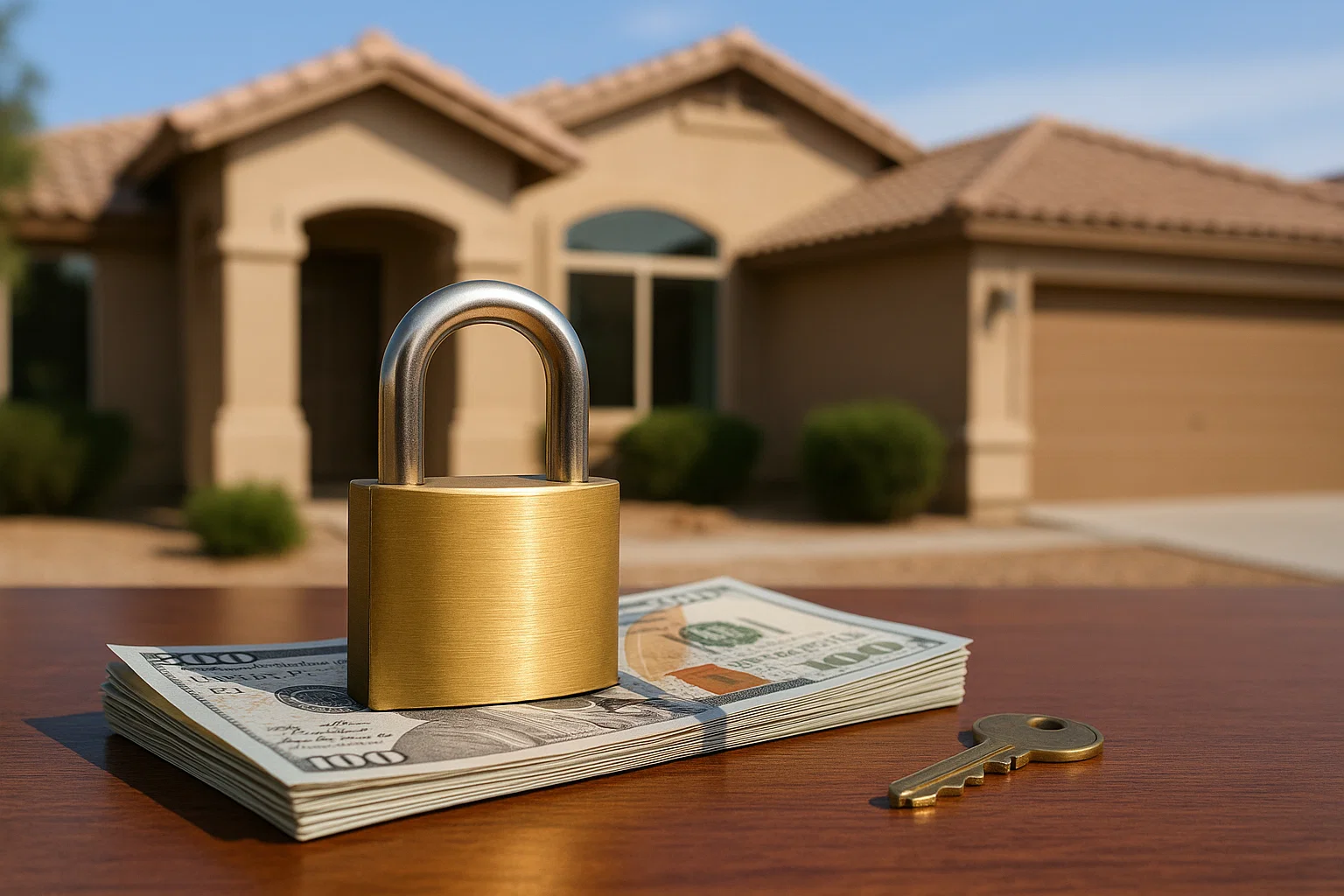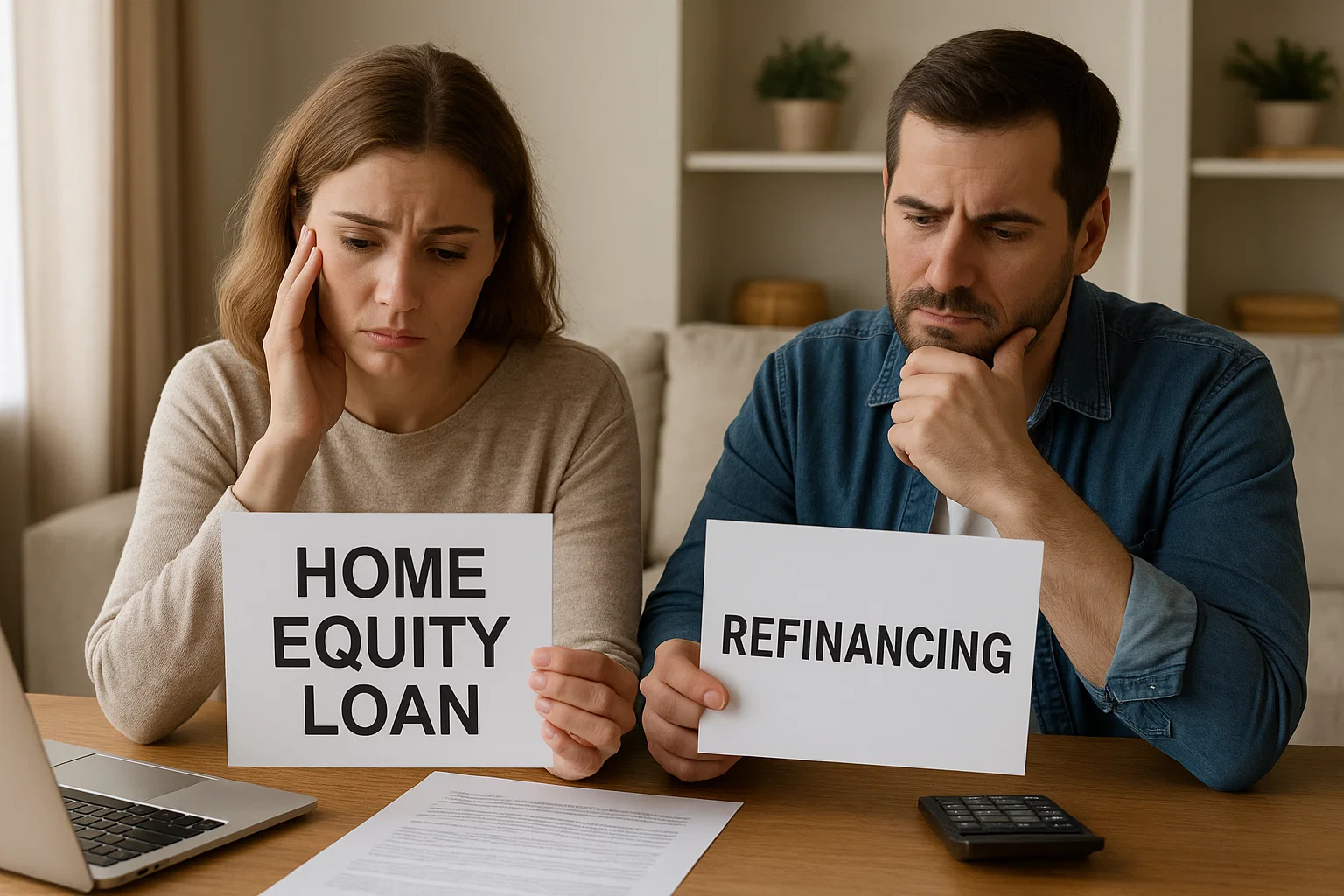Refinance Mortgage No Closing Costs: Your Guide to Saving Money Upfront
November 19, 2025
Learn about refinance mortgage no closing costs. Understand the pros, cons, and strategies to save money upfront on your mortgage refinance.

Thinking about refinancing your mortgage but worried about all those upfront fees? You're not alone. Many homeowners are looking for ways to save money, and the idea of a refinance mortgage no closing costs sounds pretty good. But does it really mean no costs at all? Let's break down what a no-closing-cost refinance actually is, how it works, and whether it's the right move for you.
Key Takeaways
- A refinance mortgage with no closing costs doesn't eliminate fees; they're either added to your loan balance or come with a slightly higher interest rate.
- While great for immediate savings, these loans can cost more over the long term due to the increased loan amount or higher interest.
- If you plan to sell your home or refinance again in a few years, a no-closing-cost option might save you money upfront.
- For long-term homeowners, paying closing costs upfront often leads to greater overall savings due to a lower interest rate.
- Always compare loan estimates from different lenders to see the true cost and determine if a no-closing-cost refinance makes financial sense for your situation.
Understanding Refinance Mortgage No Closing Costs
What a No-Closing-Cost Refinance Truly Entails
When you hear "no closing cost refinance," it sounds pretty straightforward, right? Like magic, all those fees just disappear. But here's the real deal: the costs don't vanish; they're just handled differently. Instead of paying a pile of money upfront when you sign the papers, those expenses are either added to your new loan balance or you agree to a slightly higher interest rate. Think of it like this: you're still paying for the services, but the payment method changes. This can be a game-changer if you don't have thousands of dollars sitting around for closing fees, which can often run into the thousands, sometimes even a few percent of your loan amount.
How No-Closing-Cost Refinances Function
So, how does this actually work in practice? Lenders offer a couple of main ways to make this happen. The most common method is rolling the closing costs directly into your new mortgage principal. Let's say your closing costs would normally be $5,000. With this option, your new loan amount would be $5,000 higher than it would have been otherwise. This means your monthly payments will be a bit higher than if you'd paid those costs upfront, but you avoid that immediate cash outlay.
Another way lenders structure this is by offering you a higher interest rate in exchange for covering the closing costs. So, you might get a rate that's, say, 0.25% higher than the lowest available rate, but you won't have to pay those closing fees out of pocket. The choice between these two methods often depends on how long you plan to stay in your home and your monthly budget.
Here's a quick look at the typical closing costs you might encounter:
- Loan origination fees
- Appraisal fees
- Title insurance
- Credit report fees
- Prepaid property taxes
Dispelling Myths About No-Cost Refinancing
One of the biggest myths is that a no-closing-cost refinance means the lender is just eating all the expenses. That's not quite right. As we've seen, those costs are accounted for, either by increasing your loan amount or by accepting a higher interest rate. Another misconception is that this is always the cheaper option in the long run. While it saves you money upfront, that higher loan balance or interest rate can add up over the life of the loan. It's really about trading immediate savings for potential long-term costs.
It's important to remember that "no closing cost" is a marketing term. The expenses associated with refinancing still exist. The lender is essentially giving you a credit to cover these costs, which is typically funded by a slightly higher interest rate or by rolling the costs into the loan principal. This means you're paying for them, just not all at once at the closing table. Always ask your lender to break down exactly how the "no closing cost" aspect is being achieved.
Evaluating the Benefits of a No Closing Cost Refinance

So, you're thinking about refinancing your mortgage, and the idea of skipping out on those hefty closing costs sounds pretty good, right? It's definitely a big draw for a lot of homeowners. Let's break down why this option can be so appealing, especially if you're looking for some breathing room in your budget right now.
Immediate Financial Relief and Cash Flow
This is probably the most obvious perk. When you refinance without paying closing costs upfront, you don't have to come up with thousands of dollars out of your own pocket. This means you can keep that cash for other things – maybe you've got some home repairs you've been putting off, or perhaps you just want a bit more cushion in your bank account. It's like getting a financial breather exactly when you might need it most. You can keep your plans moving forward without that immediate cash crunch.
Accelerated Break-Even Point
When you refinance, the goal is usually to save money over time, often through a lower monthly payment or a better interest rate. Normally, you have to factor in how long it will take for the savings from your new loan to offset the closing costs you paid. With a no-closing-cost refinance, this break-even point happens much faster, or in some ways, it's already achieved because you didn't pay anything upfront. This means you start seeing the actual savings from your refinance sooner rather than later.
Strategic Advantages for Short-Term Homeowners
If you're not planning on staying in your home for the long haul – maybe you anticipate moving in the next 5 to 7 years – a no-closing-cost refinance can be a really smart move. You get the benefit of a potentially lower interest rate or different loan terms without having to pay the full cost of refinancing. Since you won't be in the home long enough to pay back those costs through interest over many years, you essentially get the advantages of refinancing without bearing the full long-term expense. It's a way to make a move that benefits you in the shorter term.
The main appeal here is avoiding that large, upfront payment. It makes refinancing accessible even if your savings aren't currently robust enough to cover traditional closing fees. This can be a game-changer for people who need to adjust their mortgage payments now but don't have the liquid assets readily available.
Here's a quick look at how the break-even point can shift:
Keep in mind that the monthly savings might be slightly less with a no-closing-cost option because the lender often makes up for the waived fees with a slightly higher interest rate. But, the immediate lack of an upfront payment is the big win.
Navigating the Downsides of No Closing Cost Mortgages

While the idea of refinancing without paying anything upfront sounds pretty sweet, it's not all sunshine and rainbows. There are definitely some trade-offs to consider, and it's important to know what you're getting into.
The Impact of Higher Interest Rates
Often, when a lender says "no closing costs," what they really mean is they're rolling those costs into your loan or, more commonly, they're giving you a slightly higher interest rate. Think of it like this: they're covering your upfront fees, but they need to make that money back somehow. This usually means you'll pay a bit more in interest over the life of the loan compared to a refinance where you pay closing costs out of pocket.
Let's look at a quick example. Say you have a $300,000 loan. A refinance with upfront closing costs might come with a 6.0% interest rate. A "no closing cost" option might bump that rate up to 6.25%. Over 30 years, that quarter-percent difference can add up to thousands of dollars more in interest paid.
As you can see, that small rate increase means paying an extra $17,482 over the loan's term. It's a trade-off: you save money now, but you pay more later.
Long-Term Financial Implications
Because of that potentially higher interest rate, a no-closing-cost refinance can end up costing you more in the long run. If you plan on staying in your home for many years, that extra interest paid can easily outweigh the upfront savings. It's like buying something on a payment plan with no interest – it seems great at first, but if the price was inflated to begin with, you might have been better off paying cash.
- Increased total interest paid: This is the most significant long-term cost. The longer you have the loan, the more this difference grows.
- Slower equity build-up: With higher monthly payments (due to interest), less of your payment goes towards the principal balance, meaning you build equity more slowly.
- Potential for higher overall loan balance: If closing costs are rolled into the loan, your principal balance increases, meaning you're paying interest on that amount too.
The key thing to remember is that "no closing cost" doesn't mean "no cost." The costs are just handled differently, and that difference usually comes back to you in the form of a higher interest rate or a larger loan balance.
Potential Effects on Loan-to-Value Ratios
When closing costs are rolled into your new loan amount, it increases your total loan balance. This can affect your Loan-to-Value (LTV) ratio, which is the amount you owe on your mortgage compared to the home's appraised value. For example, if you have 20% equity in your home, your LTV is 80%. If you roll $10,000 in closing costs into the loan, your LTV might jump to 82% or 83%.
Why does this matter? Well, if your LTV goes above certain thresholds (often 80%), you might be required to pay for Private Mortgage Insurance (PMI) on conventional loans. PMI protects the lender if you stop making payments, but it's an extra monthly expense for you. This could negate some or all of the savings you were hoping to achieve with the refinance.
Strategies for Securing the Best No Closing Cost Refinance Deal
So, you're looking to refinance without shelling out cash upfront. Smart move, especially if you want to keep more money in your pocket right now. But just because it's 'no closing cost' doesn't mean you can't shop around and get an even better deal. Think of it like buying a car – there are always ways to negotiate and find the best terms.
Comparison Shopping for Lenders
This is probably the most important step. Don't just go with the first lender you talk to, or the one your current bank offers. Different lenders have different ways of structuring these 'no closing cost' deals. Some might offer a slightly higher interest rate to cover the costs, while others might have lower fees that they can roll into the loan. You really need to get quotes from at least three to five different lenders. Make sure you're comparing apples to apples – look at the interest rate, the loan term, and any fees that might still be there, even if they're rolled in.
Here’s a quick way to compare:
- Lender A: Interest Rate: 6.5%, Closing Costs: Rolled into loan, Total Loan Amount: $300,000 + $8,000 (costs)
- Lender B: Interest Rate: 6.7%, Closing Costs: Covered by rate credit, Total Loan Amount: $300,000
- Lender C: Interest Rate: 6.4%, Closing Costs: $5,000 (paid upfront, not a no-cost option)
Exploring Appraisal Waivers and Fee Reductions
Sometimes, lenders can waive certain fees, which can significantly lower your overall costs, even if they're rolled into the loan. For instance, if you have a good amount of equity in your home or you've been a loyal customer, a lender might skip the appraisal fee. That's usually a few hundred dollars saved right there. Also, don't be afraid to ask about other fees, like the application fee or title fees. Sometimes lenders have a little wiggle room, especially if you're bringing them new business.
Remember, even with a 'no closing cost' refinance, the lender still has expenses. Your job is to find out how they're covering those costs and if there's a way to minimize them for yourself.
Leveraging Mortgage Brokers for Optimal Options
Mortgage brokers can be super helpful here. They work with a bunch of different lenders, so they can shop around for you and find the best deals that fit your specific situation. They often have access to lenders or loan programs that you might not find on your own. Plus, they can explain the nitty-gritty details of each offer, helping you understand which 'no closing cost' structure is truly the most beneficial for you in the long run, or at least for the time you plan to stay in the home.
When a No Closing Cost Refinance Makes Financial Sense
So, when does it actually make sense to go for a refinance where you don't pay anything upfront? It's not a one-size-fits-all situation, but there are definitely some scenarios where this type of loan really shines. Think about it – if you're trying to save money right now, or if you know you won't be in your home for a super long time, this could be your ticket.
Ideal Scenarios for Short-Term Homeownership
If you're pretty sure you'll be selling your home within the next few years, a no closing cost refinance can be a smart move. You get the benefit of a potentially lower interest rate or monthly payment without shelling out a bunch of cash upfront. Since you won't be in the home long enough to pay back those costs through a slightly higher interest rate, you come out ahead. It's all about avoiding that big lump sum payment when you're planning to move anyway.
Prioritizing Immediate Cash Availability
Sometimes, life throws curveballs, and you just need to keep your cash on hand. Maybe you have unexpected medical bills, or you want to consolidate some high-interest debt. A no closing cost refinance lets you tap into your home's equity or lower your monthly payments without draining your savings account. This can provide much-needed breathing room in your budget when you need it most.
Synergies with Cash-Out Refinance Goals
Combining a no closing cost refinance with a cash-out option can be a powerful financial tool. If you need to borrow extra money for home improvements, education, or other significant expenses, doing it through a refinance with no upfront fees means you get the cash without the immediate financial hit of closing costs. The costs are often rolled into the loan, meaning your loan balance increases, but you still get the funds you need without paying out of pocket at closing.
It's important to remember that 'no closing cost' doesn't mean the costs disappear. They're either baked into a slightly higher interest rate over the life of the loan or added to your principal balance. The key is whether this trade-off works for your specific financial timeline and goals.
Here's a quick look at when it typically makes sense:
- Short-term ownership: Planning to sell in 1-5 years.
- Immediate cash needs: Need funds now without depleting savings.
- Debt consolidation: Want to lower payments on other debts.
- Budget constraints: Can't afford upfront closing costs.
And here's when it might not be the best fit:
Specific Loan Types and No Closing Cost Options
When you're looking into refinancing without paying upfront fees, it's good to know that different loan types have their own ways of handling these "no closing cost" scenarios. It's not a one-size-fits-all deal, and understanding these differences can help you pick the right path.
VA Refinance Without Upfront Fees
For our nation's veterans, the VA Interest Rate Reduction Refinance Loan (IRRRL) is often structured as a zero closing cost refinance. This means you can potentially lower your interest rate or switch from an adjustable rate to a fixed rate without paying out-of-pocket fees. A big plus here is that VA loans typically don't require monthly mortgage insurance, which can add to your savings.
FHA Streamline with Rolled-In Costs
If you have an FHA loan, the FHA Streamline Refinance program is designed to make things easier. While it's not strictly "no closing cost" in the sense that fees disappear, it allows you to roll most of the closing costs directly into your new loan balance. This means you don't pay them upfront, but your loan amount will be slightly higher. This can be a good option if you want to lower your rate or monthly payment without a large cash outlay.
Conventional and Jumbo Loan Considerations
For conventional loans, lenders might offer a "no closing cost" option by giving you a slightly higher interest rate in exchange for covering your closing costs. This is essentially a trade-off: you save money upfront, but you'll pay a bit more in interest over the life of the loan. This can make sense if you plan to move or refinance again before you pay off a significant amount of interest.
Jumbo loans, which are for amounts exceeding conforming loan limits, can have substantial closing costs. Finding a lender willing to waive or roll in these costs can lead to significant upfront savings. However, these options might be less common or come with a more noticeable rate increase compared to conforming loans.
Here's a quick look at how costs are typically handled:
It's important to remember that "no closing cost" doesn't mean the costs vanish. They are either absorbed by the lender through a slightly higher interest rate or added to your loan balance. Always compare the total cost over time, not just the upfront savings.
Wrapping It Up
So, we've talked a lot about how to refinance your mortgage without paying a bunch of money upfront. It sounds great, right? And sometimes, it really is the best move, especially if you're not planning to stay in your home for a super long time. But remember, those costs don't just disappear. They usually get added to your loan balance or mean you pay a bit more interest over time. It's all about figuring out what makes the most sense for your wallet and your future plans. Definitely do the math, compare your options, and make sure you know exactly what you're signing up for before you commit.
Frequently Asked Questions
What does 'no closing cost refinance' really mean?
It sounds like you don't pay anything, right? Well, not exactly. With a no-closing-cost refinance, you're not paying those fees upfront. Instead, the lender usually adds those costs to your loan amount, making your total loan bigger. Or, they might give you a slightly higher interest rate on the loan. So, the costs are still there, they're just handled differently.
Is a no-closing-cost refinance actually cheaper?
It can be cheaper right now, but maybe not over the long run. If you add the costs to your loan, you'll pay more interest over time because your loan balance is higher. If you get a higher interest rate, you'll also pay more interest. It's usually better if you plan to move or refinance again in a few years.
How do lenders make money if I don't pay closing costs?
Lenders still get paid! They either build those costs into the total amount you borrow, which means you'll pay interest on that extra amount for years. Or, they charge you a slightly higher interest rate from the start. This higher rate helps them cover their costs and make a profit.
When is a no-closing-cost refinance a good idea?
This type of refinance is great if you need to save money right away, like for home repairs or if you're planning to sell your house in just a few years. It helps you avoid a big bill at closing, giving you more cash on hand for the short term.
What are the downsides of a no-closing-cost refinance?
The main downsides are that you'll likely pay more interest over the life of the loan. This could be because your loan amount is bigger, or your interest rate is higher. Also, adding those costs to your loan might affect how much of your home you actually own (your loan-to-value ratio), which could mean you have to pay for mortgage insurance.
Can I get a no-closing-cost refinance for any type of loan?
Yes, you can often find no-closing-cost options for different loan types. This includes loans for veterans (like VA loans), loans for those with lower credit (like FHA loans), and even regular home loans (conventional loans). Sometimes, for larger loans (jumbo loans), lenders might also offer ways to reduce or waive closing costs.













Get in touch with a loan officer
Our dedicated loan officers are here to guide you through every step of the home buying process, ensuring you find the perfect mortgage solution tailored to your needs.
Options
Exercising Options
Selling
Quarterly estimates
Loans
New home

Stay always updated on insightful articles and guides.
Every Monday, you'll get an article or a guide that will help you be more present, focused and productive in your work and personal life.









.png)
.png)
.png)
.png)
.png)
.png)
.png)
.png)
.png)
.png)
.png)
.png)
.png)
.png)
.png)
.png)
.png)
.png)